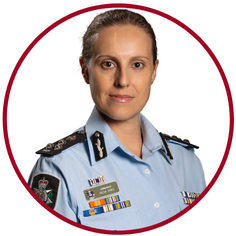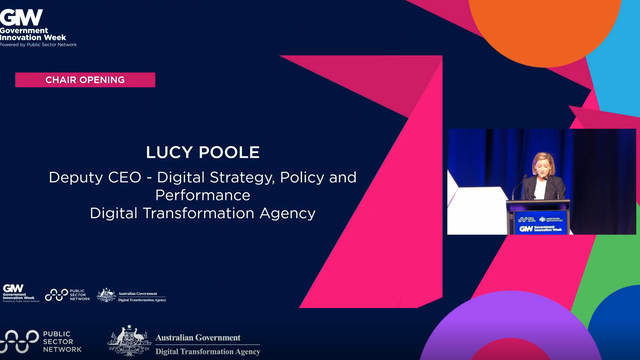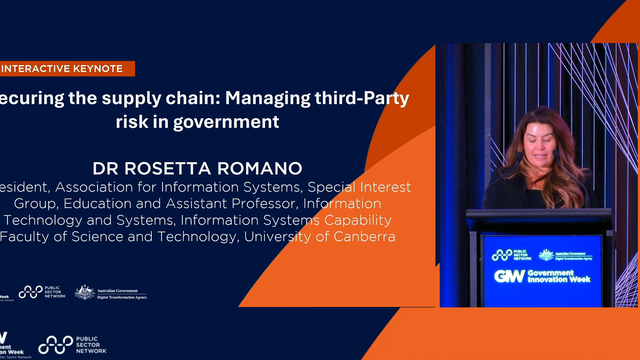Strengthening Local Networks to Help Solve Crime and Improve Public Safety

Hilda Sirec
Commander
Australian Federal Police
At the recent Future Policing event, we heard from Hilda Sirec, Commander, Australian Federal Police as she explores strengthening local networks to help solve crime and improve public safety. In this article she explores:
- The future of community engagement
- New methods to report crime and disclose information
Dealing with child sex abuse online
The internet has become something many of us are reliant on, particularly since the start of the pandemic. It has many benefits that continue to enhance our lives, but also numerous pitfalls. Hilda Sirec , a Commander of the Australian Federal Police (AFP) who deals with cyber-crime, says that based on October 2021 figures, “62% of the world’s total population used the internet” that month, which equates to 4.8 billion people, and the statistics suggest that this is likely to increase “by 4.8% annually, or by an average of more than 600,000 new users every single day.” In Australia, the figures suggest that “89% of the public are active internet users,” and that “one in three of those are children.” The worrying part though is that “one in five of those are sexually solicited while online.” According to Interpol, “this is just the tip of the iceberg,” especially given that across the EU, the amount of time children have spent online over the last decade “has doubled.”
Child sex abuse, particularly online, has become rampant. Part of the problem is that “offenders continuously adapt and diversify their methods.” The use of encryption and the dark web services “have been around for over a decade,” but what is new is the development of solutions that “enable anonymous communication, virtual private clouds, and virtual private networks.” These make access to things like the dark web much easier and as such, “we’ve seen a 300% increase in dark web activity over the past three years, noting that 80% of that traffic contains child sexual abuse material.” Live streaming of explicit acts and materials is also popular, “and it is expected to be a $337 billion industry by 2027.” Added to all that, “COVID-19 has also been a driver in further inflating the problem,” with some jurisdictions reporting a 200+% increase in activity.
An Australian response
To deal with the increase in child sex abuse online, the AFP created the Australian Centre to Counter Child Exploitation (ACCCE). It is built on four pillars: “to prepare, prevent, protect and pursue, but the overarching idea is one of partnership to lead a coordinated approach to ensure children are free from exploitation.” Partnership means having relationships with state and territory as well as global counterparts, but it also means partnering with the rest of the public sector, “the community and the private sector.” Internally, there are teams that deal with education and “countering new methodologies,” whilst “social media is a key form of community engagement.”
As part of that engagement, ACCCE developed a ‘Stop the Stigma’ campaign because research showed that “online sexual exploitation is a stigmatised topic that is not well understood.” It ran in partnership with numerous foundations, “law enforcement, NGOs and industry,” and “featured Australian of the Year Grace Tame.” It ran mostly on social media and has been “viewed over half a million times.” It was also rolled out across the Uber Australia app, which has “almost 5 million users.” There has also been anecdotal evidence that by seeing people like Grace Tame and other prominent survivors featured in the campaign, some children have been able to open up about their experiences.
To further raise awareness and decrease the stigma, “ACCCE in partnership with the AFP launched the ‘Closing the Net’ podcast, which is a ten part series that highlights the work of law enforcement, government, academia and non-government organisations working in this space.” The podcast format was chosen because “5.6 million Australians, or 26% of the Australian population, are weekly podcast listeners.” The series features 55 people talking about their experiences and “has been downloaded more than 67,000 times since July.” It is also up for an Australian podcast award.
Yet another initiative, called ‘Trace an Object’, was launched in March 2021, based on a similar European concept. It encourages the community “to identify objects from the background of images and videos of child abuse that we have lost all our leads on, and to provide that information to ACCCE for further investigation.” It was advertised during the NRL Grand Final and the “dedicated webpage has been viewed more than 94,000 times, resulting in more than 705 reports being followed up.”
Another example of ACCCE working in partnership has been the ‘Children in Pictures’ documentary, which “shone a light on the dark reality of online child sexual exploitation.” It was initiated by Queensland Police and “made its national TV debut on SBS on 24 October to a lot of positive feedback.”
ACCCE is now encouraging agencies to initiate other projects in partnership. In fact, ACCCE has a “wide range of capabilities within its structure to deliver on its mission.” The main facility is the Child Protection Triage Unit (CPTU), which mostly deals with reports of abuse. These reports “originate from a variety of sources, although the majority are received from the National Centre for Missing and Exploited Children (NCMEC), which in 2020 received a staggering 21.7 million reports.” Only 1% of those came from the public, with the rest from agencies, and it is up significantly on the previous year. Of course many are overlapping reports, but it doesn’t take away from the enormity of that figure and the fact “that children have been groomed or exploited online.”
The irony – which is not lost on the people at ACCCE – is that “technology is the key to what CPTU do, given the volume of reporting and the scale of the problem.” In fact, the unit has created a number of tools using technology and the internet, and in partnership with universities and other agencies, to assist them in dealing with the issues. These include the “Triage Referral Investigation Support Tool, which helps triage reports with optimum efficiency; the Australian Victim Identification Database, to identify as many victims as possible; and the School Uniform Database, which is an international search tool designed to support police investigators,” and is a subset of the ID database. All three use specifically designed algorithms, analysis tools and visual clues like “libraries of millions of images and videos.”



































